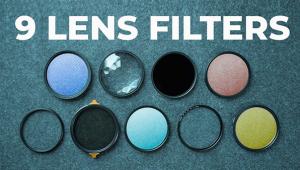A Look Back . . . A Look Ahead
For this issue we asked our contributors to take what they have learned from
the last year, mix in a good dose of what they might have heard from peers and
manufacturers about what's on the drawing board, and come up with some
predictions about what we might expect in the year ahead. Their essays make
for fascinating reading, with each contributor discussing an aspect of the art
and craft viewed through their own interests and activities.
 In some ways it would seem easy to discuss the changes ahead. Digital imaging--and
that means different things to different people--has obviously caused a
profound change in the last few years, one that has altered how many of us shoot,
archive, and share our photographs. And what began as an interesting proposition
has become, for many people, the way things are done. But the fact that we could
"crunch" image information like an accountant crunches numbers did
not automatically alter everyone's thinking and activities. Indeed, when
digital first showed up as a possibility for widespread use it was a scientific
curiosity that produced fairly miserable results, akin to the first cell phone
camera images. Some ideas just didn't work and much of it was transitional.
In some ways it would seem easy to discuss the changes ahead. Digital imaging--and
that means different things to different people--has obviously caused a
profound change in the last few years, one that has altered how many of us shoot,
archive, and share our photographs. And what began as an interesting proposition
has become, for many people, the way things are done. But the fact that we could
"crunch" image information like an accountant crunches numbers did
not automatically alter everyone's thinking and activities. Indeed, when
digital first showed up as a possibility for widespread use it was a scientific
curiosity that produced fairly miserable results, akin to the first cell phone
camera images. Some ideas just didn't work and much of it was transitional.
Enter the consumer electronics industry, the mass marketers of technology adapted to consumer goods. George Fisher, then head honcho at Eastman Kodak, said at the time, "When consumer electronics touches photography it will never be the same." Never have truer words been spoken. The rest is history, much of which we have reported on in these pages. But the transition from film to digital did not happen in a vacuum. For any new technological adaptation to succeed it has to be manifest in products and methodology that make sense, that rightfully displace any former way of working because of overall cost savings and real benefits to those who use it. But the technological shift that took place has to be viewed in terms of globalization and mass marketing, the engine that now drives many companies in the photo industry today.
The phrase "film is dead" is actually a steal from Nietzsche, whose proclamation that "God is dead" was more his comment on how organized religion no longer served as a meaningful and helpful context in an industrialized world. While his thinking and that interpretation are certainly debatable, the co-opting of the phrase by digital proponents says just about the same thing, that film as a photographic methodology no longer serves a meaningful role and indeed may hamper the creative growth and capabilities of photographers. I happen to disagree with that, as do many others.
Part of that change occurred because of production methods, chiefly in the publishing industry, from magazines to advertisements, where computer to plate technology altered how images were prepared for printing. Part of it also comes from the omnipresent box that more and more of us stare at for much of our days, and how we feed and get fed by computers. Much of it comes from how the image has become an essential tool of communication, and how the mediums of communication are mostly bits and bytes.
So yes, digital imaging has become the technology that demands the most attention in photography today. But that does not mean it is viable for everyone or that there's no other way to work and create. But what's ahead is continued development in digital technology and products, and very little in film. Does that eliminate film from consideration, or all those processes and methodologies associated with film? Certainly not. But it sure does give you an idea of what's ahead.
If you'd like to join in this discussion please view our Forums at www.shutterbug.com and address them in the December issue category.

 In some ways it would seem easy to discuss the changes ahead. Digital imaging--and
that means different things to different people--has obviously caused a
profound change in the last few years, one that has altered how many of us shoot,
archive, and share our photographs. And what began as an interesting proposition
has become, for many people, the way things are done. But the fact that we could
"crunch" image information like an accountant crunches numbers did
not automatically alter everyone's thinking and activities. Indeed, when
digital first showed up as a possibility for widespread use it was a scientific
curiosity that produced fairly miserable results, akin to the first cell phone
camera images. Some ideas just didn't work and much of it was transitional.
In some ways it would seem easy to discuss the changes ahead. Digital imaging--and
that means different things to different people--has obviously caused a
profound change in the last few years, one that has altered how many of us shoot,
archive, and share our photographs. And what began as an interesting proposition
has become, for many people, the way things are done. But the fact that we could
"crunch" image information like an accountant crunches numbers did
not automatically alter everyone's thinking and activities. Indeed, when
digital first showed up as a possibility for widespread use it was a scientific
curiosity that produced fairly miserable results, akin to the first cell phone
camera images. Some ideas just didn't work and much of it was transitional.Enter the consumer electronics industry, the mass marketers of technology adapted to consumer goods. George Fisher, then head honcho at Eastman Kodak, said at the time, "When consumer electronics touches photography it will never be the same." Never have truer words been spoken. The rest is history, much of which we have reported on in these pages. But the transition from film to digital did not happen in a vacuum. For any new technological adaptation to succeed it has to be manifest in products and methodology that make sense, that rightfully displace any former way of working because of overall cost savings and real benefits to those who use it. But the technological shift that took place has to be viewed in terms of globalization and mass marketing, the engine that now drives many companies in the photo industry today.
The phrase "film is dead" is actually a steal from Nietzsche, whose proclamation that "God is dead" was more his comment on how organized religion no longer served as a meaningful and helpful context in an industrialized world. While his thinking and that interpretation are certainly debatable, the co-opting of the phrase by digital proponents says just about the same thing, that film as a photographic methodology no longer serves a meaningful role and indeed may hamper the creative growth and capabilities of photographers. I happen to disagree with that, as do many others.
Part of that change occurred because of production methods, chiefly in the publishing industry, from magazines to advertisements, where computer to plate technology altered how images were prepared for printing. Part of it also comes from the omnipresent box that more and more of us stare at for much of our days, and how we feed and get fed by computers. Much of it comes from how the image has become an essential tool of communication, and how the mediums of communication are mostly bits and bytes.
So yes, digital imaging has become the technology that demands the most attention in photography today. But that does not mean it is viable for everyone or that there's no other way to work and create. But what's ahead is continued development in digital technology and products, and very little in film. Does that eliminate film from consideration, or all those processes and methodologies associated with film? Certainly not. But it sure does give you an idea of what's ahead.
If you'd like to join in this discussion please view our Forums at www.shutterbug.com and address them in the December issue category.

- Log in or register to post comments

































